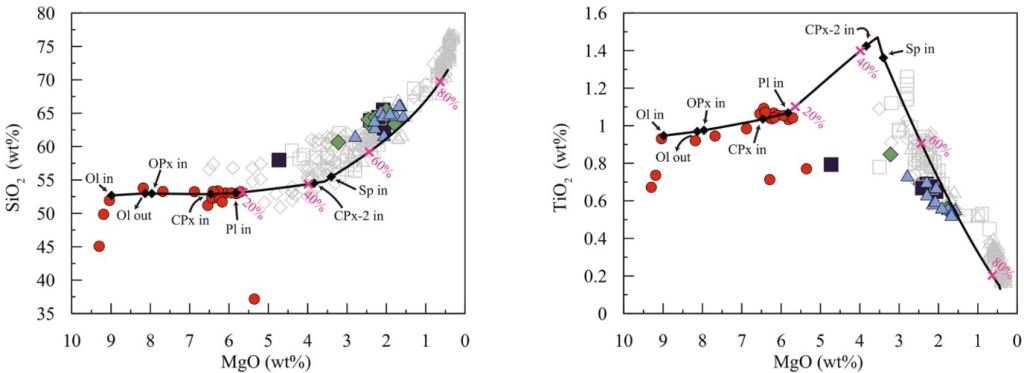
César Bucheli (et al.)-
We present a reconstruction of the physicochemical conditions of melts in the Pleistocene storage and plumbing system of the Doña Juana Volcanic Complex (SW Colombia): a poorly known, potentially active polygenetic volcano of dacitic composition comprising four major edifices and showing periods of long quiescence. Compositional data for plagioclase, amphibole, pyroxene, and Fe-Ti oxides were combined with new and existing whole-rock data from representative eruptive products, allowing for the implementation of equilibrium tests and geothermobarometry calculations within an established stratigraphic, petrographic, and geochronological framework. Textural and geochemical variabilities of all mineral phases suggest the existence of a trans-crustal magmatic system feeding the Pleistocene eruptions of Doña Juana, and cyclic rejuvenation of a crystal mush following each volcano edifice collapse. The assemblage of different crystal cargos before magma recharge and final eruption is attested by (i) the coexistence of equilibrium and disequilibrium textures and variable compositions in crystals of all studied species, (ii) felsic cores in antecrysts, (iii) mafic overgrowth rims, and (iv) significantly less differentiated microcrysts relative to the composition of meso- and macrocrysts. By integrating multiple mineral-only and mineral-liquid geothermobarometers, after careful textural analyses, we estimate the intensive parameters of the mush–melt interaction zone of the plumbing system in the middle crust, providing a preliminary view of the architecture of a trans-crustal magmatic system in a complex tectonic setting at a previously understudied area of the north-Andean volcanic zone.
